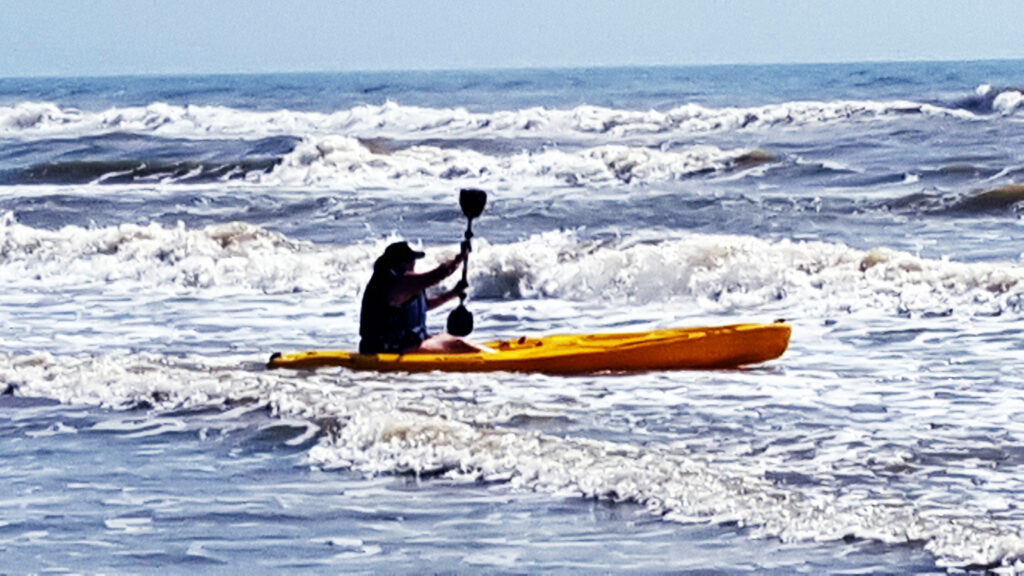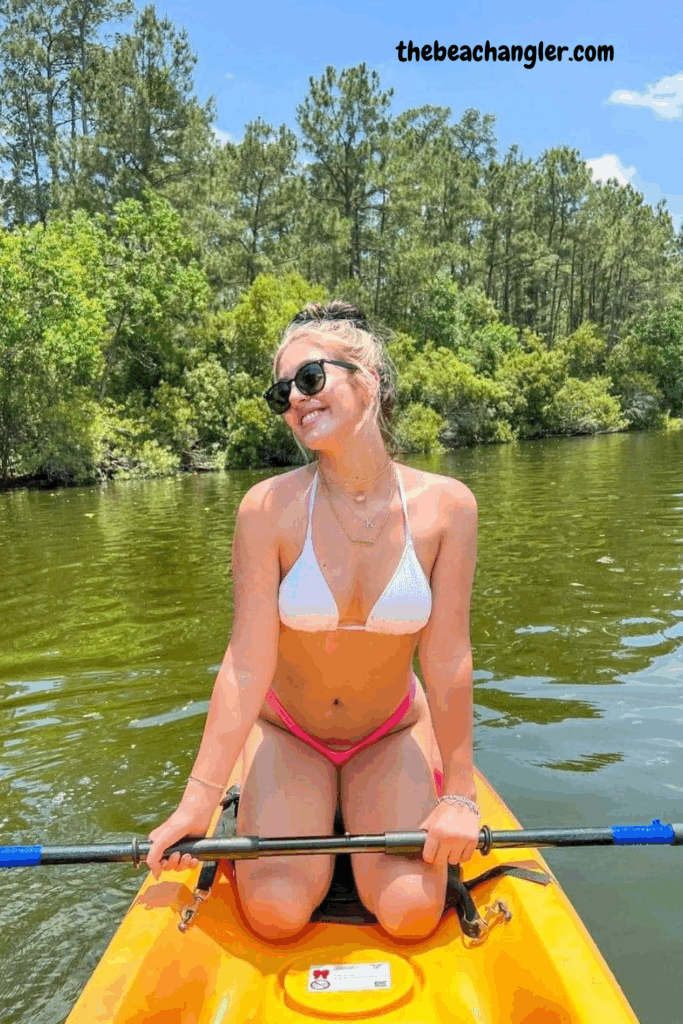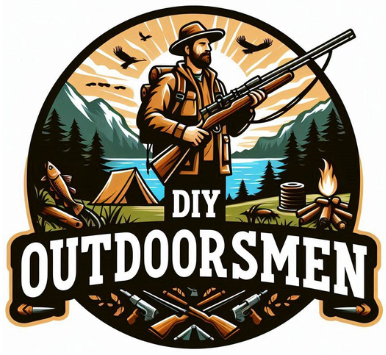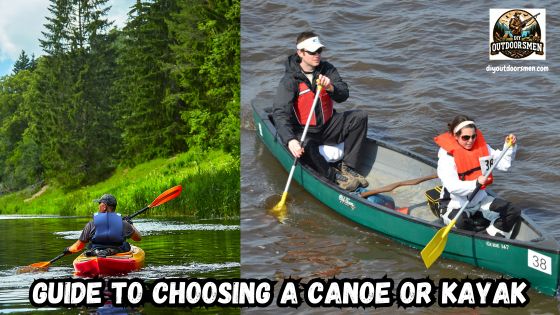Contents
- 1 Understanding the Difference Between Canoes and Kayaks
- 2 Essential Considerations for Choosing Your Canoe or Kayak
- 3 Getting Started with Canoe or Kayak Paddling
- 4 A Quick Guide to Launching Your Paddling Adventures
- 5 Key Considerations Before Buying a Canoe or Kayak
- 6 Advanced Paddling Tips and Tricks
- 7 The Basics and Which Type Fits Your Needs?
- 8 Frequently Asked Questions
- 9 Canoe or Kayak Final Considerations
I have always been passionate about water adventures, and choosing the right canoe or kayak can be a rewarding process for any beginner. This guide explains the key points to consider when deciding between the two.
QUICK LOOK: Key Factors in Choosing a Canoe or Kayak
Intended Use: Think about the type of water where you will paddle most often. Canoes typically excel on calm rivers and lakes, whereas kayaks are engineered for more dynamic conditions such as whitewater or coastal adventures. Each environment requires a different design approach.
Group vs. Solo Paddling: If you are planning outings with family or friends, a canoe may be the better option because of the extra space. For solo escapades, however, the compact design of a kayak might serve you best.
Storage and Capacity: Evaluate how much equipment you routinely carry. Canoes generally provide more storage space making them ideal for multi-day trips that demand extra supplies. This is a very important consideration when safety and comfort are both priorities.
Comfort and Fit: The level of personal comfort is really important. Choosing a boat that fits your body size and paddling style well can help prevent fatigue and strain, ultimately allowing you to enjoy your time on the water even longer.
Stability and Balance: For beginners especially, stability is something to look for. I have found that the forgiving design of a canoe offers better balance, while some kayaks come with added features to help maintain stability. Considering your level of experience will guide you towards the right choice.
I share my practical insights based on years of interest and research to help you make an informed decision about your next water adventure. I have spent many hours on the water, testing different boats and techniques, and I want to help you get a feel for what might best match your preferences.
Understanding the Difference Between Canoes and Kayaks
I have found that knowing the main differences between canoes and kayaks simplifies the selection process. Both types of boats are made with distinct features that cater to various needs. This section takes a close look at these characteristics in order to help you pick the boat that fits best with your lifestyle.
Advantages of Canoes
- Stability: Canoes are built with a wider design and a lower center of gravity. I appreciate this stability, especially on calm lakes or slow-moving rivers. This forgiving balance makes them particularly appealing for beginners who might still be getting comfortable on the water.
- Cargo Capacity: With plenty of room to store gear, canoes are ideal for extended trips or family outings where extra space is needed. I have often used a canoe for camping excursions, where carrying food, tents, and other supplies is an essential part of the adventure.
- Ease of Portaging: Their design favors easy portaging or carrying over land, which is particularly beneficial if you plan on exploring areas with limited water access. This trait makes canoes a practical choice for mixed adventures that include both water and land travel.
Advantages of Kayaks
- Maneuverability: Kayaks are incredibly agile, which makes them ideal for navigating narrow waterways and executing tricky turns. I have found that this quality provides a thrilling experience in fast-moving or choppy conditions. The skill required to balance in a kayak often translates to improved overall paddling technique.
- Speed: The streamlined shape of kayaks paired with double-bladed paddles lets these boats move faster. This speed advantage means you can cover longer distances in a shorter period of time. Faster travel is particularly useful if you are exploring new routes independently or racing against time to catch the perfect weather.
- Handling Wind and Waves: Kayaks are engineered to better manage wind and waves. Their lower profile helps in maintaining balance when faced with challenging water conditions where a canoe might struggle. This design feature makes kayaks appealing for adventurers seeking both efficiency and excitement.
While canoes offer a generous amount of space and the benefit of easier gear transport, kayaks provide efficiency in speed and maneuverability. In deciding between the two, consider your typical routes, the kind of water you expect to navigate, and whether you plan to paddle alone or as part of a group. Reflecting on these points can clarify which boat would best support your paddling goals.
Essential Considerations for Choosing Your Canoe or Kayak
Choosing between a canoe and a kayak starts with understanding your personal paddling style and the conditions in which you plan to use your boat. I have learned that each type offers unique advantages while also facing its own limitations.
Your decision depends largely on the type of paddling you want to do, your preferred water conditions, and how much gear you plan to carry. Taking the time to reflect on these factors facilitates getting the right boat and ensures that every outing is both safe and enjoyable.
Canoes often provide a stable platform and ample storage, making them a good choice for longer trips or when traveling with family. The generous space available in a canoe means that you can pack extra supplies, camping gear, and other essentials with ease.
On the other hand, kayaks are well known for their speed and maneuverability. These qualities come in handy if you prefer solo paddling or if you plan to get into challenging water conditions. Knowing these differences early on sets a solid foundation for an enjoyable paddling experience.
I have witnessed firsthand how the right boat greatly influences the pleasure and safety of your water expeditions. To offer a broader perspective, imagine planning a multi-day expedition where storage is crucial. In such cases, a canoe clearly offers advantages.
In contrast, if you are planning to explore narrow waterways and twisty natural channels, a kayak could be the ideal choice. Over time, I have come to appreciate that the subtle features of each boat type can impact not only performance but also the overall experience on the water.
Getting Started with Canoe or Kayak Paddling
Before you step into the water, it is important to have a clear understanding of your personal needs when it comes to paddling. As I prepared to choose my own vessel, I carefully considered essential factors such as comfort, the nature of the water, and storage requirements. Prioritizing what matters most to your particular paddling style makes all the difference when entering the sport.
For beginners, I recommend starting with a model that is user-friendly and tolerant of early mistakes. Taking your time to familiarize yourself with key considerations not only builds confidence but also paves the way for improved skills later on. Here are some crucial tips for anyone just getting started:
- Type of Water: If you plan to paddle in calm lakes or slow-moving rivers, both canoes and kayaks offer enjoyable experiences. However, if you expect to face strong waves or windy conditions or need to navigate through rapids, a kayak might provide the necessary stability and agility.
- Number of Paddlers: Canoes are excellent for group outings as they offer ample space for several people. Conversely, kayaks usually cater better to solo adventurers or those who are comfortable in a more compact setting.
- Storage and Gear: Think carefully about the equipment you will be carrying. Canoes can accommodate a larger amount of gear, which is essential for long trips or multi-day excursions where camping supplies are involved.
- Paddling Style: Canoeing typically uses a single-bladed paddle and sometimes requires a kneeling position. Kayaking, in comparison, involves a double-bladed paddle while seated. I have noticed that mastering these different strokes can accelerate learning and boost overall paddling confidence.

Additionally, it is important to set realistic goals. Starting with calm local waters before moving on to more challenging conditions allows beginners to build fundamental skills while gradually getting used to the physical demands of paddling.
A Quick Guide to Launching Your Paddling Adventures
Starting your journey on the water does not have to be complicated. When I first decided to pursue water adventures, I followed some straightforward steps that made the transition both simple and enjoyable. Here is an all-in-one guide to help you kick things off:
- Evaluate Your Needs: Begin by considering the activities you plan to pursue. Reflect on the type of water, the volume of gear you intend to carry, and whether you will be paddling alone or with others. Each detail matters and will influence the kind of boat you choose.
- Research Models: Look into different boat models available for both canoes and kayaks. Read reviews, compare features, and ask for recommendations. This research phase gives you a clear picture of what best suits your lifestyle and physical needs.
- Test if Possible: If there is a local club or rental service available, I found it extremely helpful to try out a few models before making a purchase. This hands-on experience ensures that you have a good sense of how each boat feels on the water and fits your style.
- Learn the Basics: Invest time in learning some fundamental paddling techniques. Practicing essential strokes and maneuvers helps you build pace and confidence in handling the water. Over time, this practice can make your water experiences more rewarding and safe.
- Consider Future Needs: Even if you start with a particular type of boat, think about what features might become important as your skills and adventures expand. Planning ahead prevents the need for premature upgrades and keeps your progress smooth.
Taking these steps allows you to ease into paddling gradually, set achievable goals, and enjoy every moment on the water. Learning at your own pace builds the foundation for a lifelong passion for water sports.
Key Considerations Before Buying a Canoe or Kayak
When planning your purchase, it helps to break down your decision into clear, manageable factors. I always consider several practical aspects that ensure I make the best choice for my needs.
- Intended Use: Think about the type of water where you will paddle most often. Canoes typically excel on calm rivers and lakes, whereas kayaks are engineered for more dynamic conditions such as whitewater or coastal adventures. Each environment requires a different design approach.
- Group vs. Solo Paddling: If you are planning outings with family or friends, a canoe may be the better option because of the extra space. For solo escapades, however, the compact design of a kayak might serve you best.
- Storage and Capacity: Evaluate how much equipment you routinely carry. Canoes generally provide more storage space making them ideal for multi-day trips that demand extra supplies. This is a very important consideration when safety and comfort are both priorities.
- Comfort and Fit: The level of personal comfort is really important. Choosing a boat that fits your body size and paddling style well can help prevent fatigue and strain, ultimately allowing you to enjoy your time on the water even longer.
- Stability and Balance: For beginners especially, stability is something to look for. I have found that the forgiving design of a canoe offers better balance, while some kayaks come with added features to help maintain stability. Considering your level of experience will guide you towards the right choice.
By carefully assessing these aspects, you can narrow down your choices and invest in a boat that not only fits your current needs but also adapts to your future adventures.
Advanced Paddling Tips and Tricks
As you gain more experience on the water, you will start to pick up additional strategies that can help you get the most out of your paddling sessions. Over time, I have gathered a number of techniques that have helped me improve my overall performance and enjoyment.
Step Up Your Stroke Technique: Practice different paddling strokes to build both speed and efficiency. Working on forward strokes, reverse strokes, and turning maneuvers can make your movement through the water much more effective. Regular practice not only boosts your competence but also gives you the confidence to take on more challenging conditions.
Optimize Boat Selection: Even after you have made your first purchase, consider trying out various models from time to time. Although you might start with a canoe, experimenting with a kayak can give you a broader perspective of what suits your evolving skills and adventurous spirit. This approach allows you to remain flexible and open to new methods of enjoying water sports.
Invest in Safety Equipment: Regardless of which boat you choose, safety should always come first. Stock up on essential gear like life jackets, whistles, and a basic first-aid kit. I always make a point to double-check my equipment before every trip. Being prepared can make a huge difference in ensuring your well-being during unexpected circumstances on the water.
Learn Local Water Conditions: It is extremely beneficial to get a good feel for the typical weather, water currents, and seasonal changes in your local area. I often tap into local guides or online community forums to get up-to-date information on water conditions. Staying informed about your environment helps boost both your safety and your enjoyment.
Regular Maintenance: Like any other piece of equipment, your canoe or kayak requires regular care. After each outing, take a moment to clean your boat and perform a quick check for any repairs that might be needed. Tackling small issues early can prevent more serious damage later on and will extend the life of your vessel significantly.
The Basics and Which Type Fits Your Needs?
When I first started out, I spent a great deal of time evaluating how each type of boat matched up with my individual requirements. Canoes and kayaks each have distinct advantages that can significantly impact your experience on the water. It is essential to match your personal comfort, style, and expected use with the right choice between these two boats.
If you find that having ample storage space matters and you plan on undertaking multi-day trips with lots of extra gear, a canoe might be your best bet. Its spacious design and ease of carrying items over land are practical benefits for longer excursions. Conversely, if you are drawn to a fast-paced, solo adventure where speed and nimbleness are needed, a kayak is likely a better partner for your escapades.
Both types come with their own learning curves. I noticed early on that while canoes generally provide more forgiving stability, kayaks require you to pay extra attention to balance and technique. Your choice should reflect not only your current skill level but also your willingness to develop and learn new paddling strategies over time.
Frequently Asked Questions
I have encountered many common queries over the years, and sharing my answers might help clear up some uncertainties for you.
Which boat is better for beginners?
Based on my experience, canoes are generally easier for beginners because of their stability, especially in calm conditions. Kayaks offer a more exciting pace but may require more precise balancing skills.
Can I use a canoe or kayak in rough waters?
Both boats have their designs tailored for specific water conditions. Canoes work nicely on flat water or gently moving rivers, while many kayaks are constructed specifically for handling choppy water and stronger currents. Your ideal choice largely depends on the water type you expect to explore.
How important is cargo capacity when choosing a boat?
Cargo capacity is very important if you plan on taking extended trips or need to travel with a lot of gear. Canoes provide more room for supplies and camping equipment, making them a practical option for multi-day outings.
Canoe or Kayak Final Considerations
Choosing between a canoe and a kayak is a personal adventure that reflects your interests, skill level, and intended use. I believe that understanding the fundamental differences and weighing practical aspects carefully improves your decision-making process.
Reflect on your usual water conditions, whether you paddle with a group or by yourself, and what gear you plan to carry. Each of these factors plays a very important role in determining the boat that will best support your explorations.
It is important not to rush the process. I recommend spending some time trying out both types of boats if you can. Experiencing firsthand how each one feels on the water often reveals subtle differences that might otherwise go unnoticed. Taking the time to test and learn will help you build confidence in your choice and prepare you for more challenging adventures later on.
Paddling isn’t just about moving across water. It gives you a chance to experience nature on a deeper level. Every outing becomes an opportunity to appreciate the environment, learn about local water conditions, and even make lasting memories with family or friends.
Your boat becomes a trusted companion that helps you explore the beauty of the outdoors safely and enjoyably. Before wrapping up, I want to stress the importance of planning and preparation. Alongside selecting the right canoe or kayak, consider taking a few lessons or joining a local paddling club.

This can help you fine-tune your skills, meet like-minded enthusiasts, and further your understanding of water sports. Each experience on the water builds your confidence, and every trip offers lessons that can guide your future choices.
Every paddle stroke not only moves you forward but also brings you closer to a richer connection with nature. The thoughtful decision to invest in a boat that matches your needs is the beginning of countless adventures and new discoveries on the water.
Take your time, do your research, and enjoy every step of the ride. Safety, preparation, and a passion for learning are the keys to a successful and fulfilling water experience. This guide is meant to be a starting point in your water adventure.
I hope that by considering these detailed aspects, you feel better prepared to choose the right boat and set out on your next expedition. Remember that every journey is unique. With the right preparation and mindset, your canoe or kayak will open up a world of exploration, growth, and pure joy on the water.
Most Recent Articles:
- 5 Best Public Land Mule Deer Hunting In Colorado

- Bow Hunting For Mule Deer

- Best Public Land Mule Deer Hunting

- Drone-Based Scouting Services For Mule Deer

- Late Season Mule Deer Hunting Tips

- 8 Tips for Dealing with Hunting Pressure While Mule Deer Hunting

As always, stay safe, enjoy the journey, and please try to leave it cleaner than you found it. If you have any comments, questions, ideas, or suggestions, please leave them in the comment section below, and I’ll get back to you ASAP. You can follow us on YouTube: Man Art Creations for videos of our DIY Adventures.
P.S. Thanks so much for checking out our blog; we really appreciate it. Just so you know, we may receive a commission if you click on some of the links that appear on our site. This helps us keep our content free and up-to-date for everyone. We appreciate your support!



